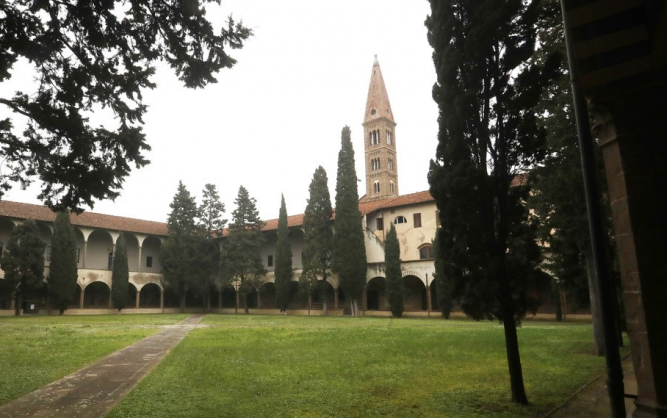20 Million To Revamp Santa Maria Novella

The former monastery located on the grounds of Santa Maria Novella will become a new Florence cultural center– interdisciplinary in nature–thanks to a 20 million euro investment which will create a new vision for over 25,000 meters (82,000 ft.) within the complex. The renovations will redefine Santa Maria Novella as a center for creativity and business. The project includes the museum of the Italian language as well as housing, showrooms for artisans, and exhibition spaces for contemporary art.
Florence mayor Dario Nardella expressed his excitement on what will become the largest creative and social hub in Europe. He explains the new spaces are designed for locals, tourists, and artists of all ages. With this in mind, 4,500 square meters (48,000 square ft.) will be transformed into 50 apartments available for rent. Families and young couples will help return the complex to a residential center and a mini neighborhood.
Perhaps even more impressive are the museum and art-related projects which will be included in the renovation. There will be a new entrance, ticket office, and food service including a restaurant with outdoor seating. More space will be given to exhibition areas for permanent and temporary collections. There will also be a new library that will display archives for visitors. In addition to these spaces, 1,100 square meters (11,840 ft.) will host paintings and sculptures that will now have the chance to put on display. These works of art from a variety of collections will be relocated to new exhibition spaces in Santa Maria Novella. Future exhibitions will be accessible free of charge.
The complex will also contain a photo library, dedicated to monumental art and buildings in Florence since the beginning of the 20th century. Additionally, the museum of the Italian language is slated to begin construction this year. The new museum will comprise four levels where visitors will have access to the museum’s permanent and ongoing collections, cafés, workshops, and activities.
A showroom will also showcase the work of young entrepreneurs, artists, and artisans. The complex will also be a social hub where visitors can attend Florence Summer Festival shows and major international events.
ARCHITECTURE & HISTORY OF SANTA MARIA NOVELLA
Piazza della Stazione 6 is the entrance to the former Santa Maria Novella monastery, run by the Dominican order, leading to the 14th century Chiostro Grande (large cloister), the Dormitorio inferiore settentrionale (an ex-dorm) and the Cappella del Papa (Pope’s Chapel).
Adjacent to a peaceful courtyard flanked by columns and vaulted-ceiling porticos, the architecture of the Chiostro Grande is decorated with murals by illustrious 16th century Florentine artists including Alessandro Allori, Santi di Tito, Ludovico Cigoli and Bernardino Poccetti. Depicted in the frescoes are episodes from the Life of Christ, the Life of St. Dominic and the Life of St. Peter.
The Chiostro Grande is adjacent to the Chiostro Verde, or Green Cloister, so-called thanks to the predominant color of Paolo Uccello’s celebrated frescoes that decorate the space.
The monastery was forced to close during Napoleon’s reign in Italy (1805 – 1814) when he suppressed many religious orders in a relentless campaign against the influence of the Roman Catholic Church.
When Italy unified as a constitutional monarchy in 1861, the space became home for the offices of the Ministry of Public Works and the Court of Cassation. Florence was designated capital of Italy beginning in 1865; in 1871, when the capital was moved to Rome, the Dominican order regained access to part of the building, while the military moved into the rest.
For exactly 100 years, from 1916 to 2016, the premises was home to Caserma Mameli, a school responsible for training future military police officers and NCOs, comprising a dormitory.
Logistically speaking, Santa Maria Novella is also only 15 minutes from the airport by tram or train. The space will be open all regardless of their interests or needs, spanning from housing to crafts to events. (elizabeth berry & rosanna cirigliano)
